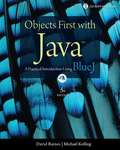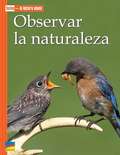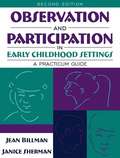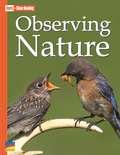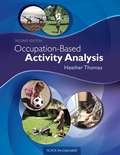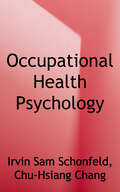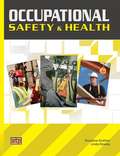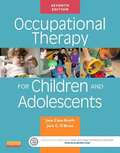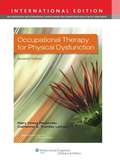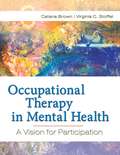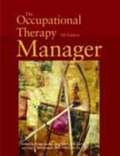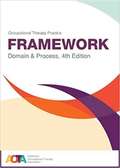- Table View
- List View
ORIGO Stepping Stones, Programa de matemáticas [Grade 2], Libro del alumno: Spanish Edition
by James Burnett Calvin Irons Peter StowasserNIMAC-sourced textbook
ORIGO Stepping Stones, Programa de matemáticas [Grade 3], Libro de práctica: Spanish Edition
by James Burnett Calvin Irons Debi DePaulNIMAC-sourced textbook
ORIGO Stepping Stones, Programa de matemáticas [Grade 3], Libro del alumno: Spanish Edition
by James Burnett Calvin Irons Debi DePaulNIMAC-sourced textbook
ORIGO Stepping Stones, Programa de matemáticas [Grade 4], Libro de práctica: Spanish Edition
by James Burnett Calvin Irons Peter StowasserNIMAC-sourced textbook
ORIGO Stepping Stones, Programa de matemáticas [Grade 4], Libro del alumno: Spanish Edition
by James Burnett Calvin Irons Debi DePaulNIMAC-sourced textbook
ORIGO Stepping Stones, Programa de matemáticas [Grade 5], Libro de práctica: Spanish Edition
by James Burnett Calvin Irons Debi DePaulNIMAC-sourced textbook
ORIGO Stepping Stones, Programa de matemáticas [Grade 5], Libro del alumno: Spanish Edition
by James Burnett Calvin Irons Debi DePaulNIMAC-sourced textbook
ORIGO Stepping Stones, Programa de matemáticas [Grade K], Libro del alumno: Spanish Edition
by James Burnett Peter Stowasser Rosemary IronsNIMAC-sourced textbook
Objects First with Java: A Practical Introduction Using BlueJ
by David J. Barnes Michael KöllingObjects First with Java: A Practical Introduction Using BlueJ, 5e, is ideal for introductory courses in Java/Introduction to Programming and Object-Oriented Programming and for beginning programmers. This is the only introductory programming textbook that uses the BlueJ integrated development environment (IDE) to teach introductory and object-oriented programming principles using Java. Its close integration with the BlueJ development environment allows this book to focus on key aspects of object-oriented software development from day one. BlueJ's clear visualization of classes and objects means that readers can immediately appreciate the differences between them, and gain a much better understanding of the nature of an object than they would from simply reading source code. Unlike traditional textbooks, the chapters are not ordered by language features but by software development concepts. Language features are introduced as a response to the problems to be solved. A large number of different, interesting projects are used to provide variety and avoid the monotony of a running problem. This book takes an "objects first" approach to teaching the traditionally difficult concepts of objects in a manipulative visual form. Throughout, the emphasis is on developing a practical approach to programming, with students encouraged to add code to existing programs rather than working with an intimidating sheet of blank paper. This textbook is printed in four-color to aid pedagogy and reader learning.
Observar el cielo de noche (¡Arriba la Lectura!, Level S #17)
by George IvanoffNIMAC-sourced textbook
Observar la naturaleza: Textos Para La Lectura Atenta (Texts Close Reading Ser.)
by Benchmark Education Co. LLC StaffNIMAC-sourced textbook
Observation And Participation In Early Childhood Settings: A Practicum Guide
by Jean Billman Janice ShermanThis book was written to give readers experience in using effective methods for observing young children's development (ages 0-8) and documenting their observations. The book is designed to guide readers' participation with children of different age groups in a variety of early childhood settings. The book encourages readers to interact with children as they learn more about development by carrying out the activities outlined in each chapter. For anyone involved with the education of young children, or practicing in a related field.
Observing Nature
by Lawrence Hall of Science University of California at BerkeleyNIMAC-sourced textbook
Occupation-Based Activity Analysis
by Heather ThomasOccupational therapists use occupations and activities as not just a goal, but also as a treatment medium, therefore, they must understand both the uniqueness of a client’s occupations and how an activity can be used therapeutically. To analyze the complexity of an occupation takes much more depth of understanding of the person engaging in it, his or her environment, and the uniqueness of the occupation a person has chosen. <p><p> The new Second Edition of Occupation-Based Activity Analysis continues the tradition of teaching students and clinicians the process of conducting activity analyses and occupation-based activity analyses. <p> Dr. Heather Thomas has updated Occupation-Based Activity Analysis, Second Edition to reflect the significant changes made to the activity analysis process and terminology in the Occupational Therapy Practice Framework, Third Edition. As in an activity analysis, occupation-based activity analysis looks at what is required for full participation, yet goes beyond analyzing the activity; it looks at what it means for the person engaging in it and how and where it is performed by that person. <p> Inside Occupation-Based Activity Analysis, Second Edition, each chapter is dedicated to a component of the activity analysis process and corresponding section of the Framework. Chapters have been restructured based on a greater emphasis on occupation-based activity analysis. From start to finish, readers are guided through identifying the occupation, sequence and timing, objects and properties, space and social demands, body functions, and structures and performance skills required.
Occupational Health Psychology
by Irvin Schonfeld Chu-Hsiang ChangThis comprehensive text for advanced undergraduate and graduate occupational health psychology (OHP) survey courses draws from the domains of psychology, public health, preventive medicine, nursing, industrial engineering, law, and epidemiology to focus on the theory and practice of protecting and promoting the health, well-being, and safety of individuals in the workplace and improving the quality of work life. <p><p>The book will also appeal to anyone who is concerned with the corrosive effects of job stress. The text addresses key psychosocial work issues that are often related to mental and physical health problems, including psychological distress, burnout, depression, accidental injury, obesity, and cardiovascular disease. It examines leadership styles as they impact organizational culture and provides specific recommendations for reducing employee-related stress through improved leader practices. Also addressed is the relationship between adverse psychosocial working conditions and harmful health behaviors, along with interventions aimed at improving the work environment and maximizing effectiveness. Additionally, the book discusses how scientists and practitioners in OHP conduct research and other important concerns such as workplace violence, work and life balance, and safety. The book reinforces learning with key concepts and findings, highlight tables containing intriguing examples of research and current controversies, and chapter summaries.
Occupational Safety And Health
by Rosalene Graham Linda RowleyOccupational Safety & Health provides an overview of potential workplace hazards, necessary safety practices, and how various processes need to be managed in order to maintain a safe workplace. This textbook is designed for use in introductory safety courses and by professionals who want to advance in the field as well as individuals who need to understand and implement safety programs. Appropriate safety regulations and laws, hazard recognition, and personal protective equipment are addressed.
Occupational Therapy For Children And Adolescents
by Jane Case-Smith Jane O'BrienThe sixth edition of Occupational Therapy for Children maintains its focus on children from infancy to adolescence and gives comprehensive coverage of both conditions and treatment techniques in all settings. Inside you'll discover new author contributions, new research and theories, new techniques, and current trends to keep you in step with the changes in pediatric OT practice. This edition provides an even stronger focus on evidence-based practice with the addition of key research notes and explanations of the evidentiary basis for specific interventions.
Occupational Therapy For Physical Dysfunction
by Mary Vining Radomski Catherine A. Trombly LathamSucceed in the course and master the concepts and skills you need to be an effective, reflective practitioner with Occupational Therapy for Physical Dysfunction, 7th Edition. The authors introduce the highly acclaimed, easy-to-understand Occupation Functional Model (OFM) in the first section, setting the stage for subsequent discussions that guide you through the assessment and treatment of adult patients with physical dysfunction from initial evaluation to treatment to follow-up. Featuring engaging and practical coverage, the Seventh Edition includes the latest research in the field, new activity analysis case examples, new photos, new online videos, and a streamlined organization that includes 45 chapters in the print textbook with three additional chapters posted online.tables that highlight the psychometric properties and the strengths and weaknesses of individual assessment methods.
Occupational Therapy In Mental Health: A Vision For Participation
by Catana Brown Virginia C. Stoffel Jaime Phillip MunozThis Client-centered, recovery-oriented text gives voice to the lived experience of mental illness across the life span. You will be guided through the assessment and interventions of individuals with mental health conditions and those whose life circumstances generate significant challenges to their participation in valued activities.
Occupational Therapy In Mental Health: A Vision For Participation
by Catana Brown Virginia C. Stoffel Jaime MunozUses the Person-Environment-Occupation (PEO) model as a framework to promote the full participation in the lives of individuals with mental illness and those struggling with psychosocial issues related to their disabilities. <p><p> Features first-person “The Lived Experience," narratives that give voice to the experience of living with a mental illness <p> Incorporates “Photo Voice” features, a blend of photography and personal stories that enable individuals to record their visions and experiences to promote dialogue about important issues. <p> Addresses co-occurring conditions such as depression, stroke, substance abuse and spinal cord injury, and attention deficit disorder and learning disabilities. <p> Promotes best practices with “Evidence-Based Practice “boxes that synthesize significant research and implications for practice. <p> Offers extensive information on theory and evidence-based interventions <p> Employs active learning strategies to facilitate the application of knowledge, skills, and attitudes essential for mental health and psychosocial interventions. <p> Addresses occupational therapy in a variety of practice settings for individuals from all cultures across the life span. <p> Discusses non-diagnosis-based populations, such as the homeless, as well as the continuum of care from institution or hospital to the community.
Occupational Therapy Manager (Fifth Edition)
by Karen Jacobs Guy L. MccormackIn today's health care environment, occupational therapy practitioners in clinical and leadership positions must be prepared to ensure that clients receive the highest quality of care; staff morale and efficiency remain high; businesses and organizations are profitable; and the profession is recognized by other health care professionals, reimbursers, and clients as a valuable service steeped in evidence. The Occupational Therapy Manager, 5th Edition can help occupational therapy practitioners become capable, effective leaders across all practice settings. This new edition includes 37 new and updated chapters, discussing the how-to aspects of creating evidence-based practices; effectively leading and motivating staff; ensuring ethical service delivery; and important day-to-day items such as budgeting, documentation, and reimbursement. Chapters also are updated to reflect health care reform and its potential effects on occupational therapy. Highlights Include-- *Section I: Defining and Rethinking Management *Section II: Strategic Planning *Section III: Leading and Organizing *Section IV: Controlling Outcomes *Section V: Public Policy, Professional Standards, and Collaboration *Section VI: Supervision *Appendixes--Occupational Therapy Code of Ethics and Ethics Standards, Scope of Practice, and more The Occupational Therapy Manager is the best-selling and most comprehensive management book in the profession and is a fundamental, classic text for all occupational therapy students, practitioners, and managers.
Occupational Therapy Practice Framework: Domain & Process
by American Occupational Therapy AssociationThe Occupational Therapy Practice Framework: Domain and Process (OTPF) summarizes the interrelated constructs that describe occupational therapy practice. It is intended for a wide audience of occupational therapy practitioners and students, other health care professionals, educators, researchers, payers, and consumers. This 4th edition (the OTPF 4) continues its predecessors mission to provide structure and guidance for practitioners to achieve the distinct value of occupational therapy in the clinic and other settings. An American Occupational Therapy Association (AOTA) official document, the OTPF is reviewed on a 5-year cycle. The review period includes the voices of AOTA members, scholars, authors, practitioners, AOTA volunteer leadership and staff, and other stakeholders to ensure that the document maintains its integrity while responding to emerging concepts and advances in occupational therapy. The OTPF 4 includes the following changes: *Increased focus on group and population clients *Identification of the cornerstones of occupational therapy practice, foundational to the success of occupational therapy practitioners *More explicit description and definition of the terms occupational science, occupation, and activity *Changes in terminology to accord with the taxonomy from the World Health Organization s International Classification of Functioning, Disability and Health (ICF) *Inclusion of gender identity as a client factor under experience of self and time *Discussion of transitions and discontinuation as outcomes to occupational therapy services *Discussion of patient-reported outcomes *Five new tables to expand on and clarify concepts. The OTPF 4 represents the latest articulation of the occupational therapy domain and process, building on a set of values that the profession has held since its founding in 1917. Embedded in this document is the occupational therapy profession s core belief in the positive relationship between occupation and health and its view of people as occupational beings.

